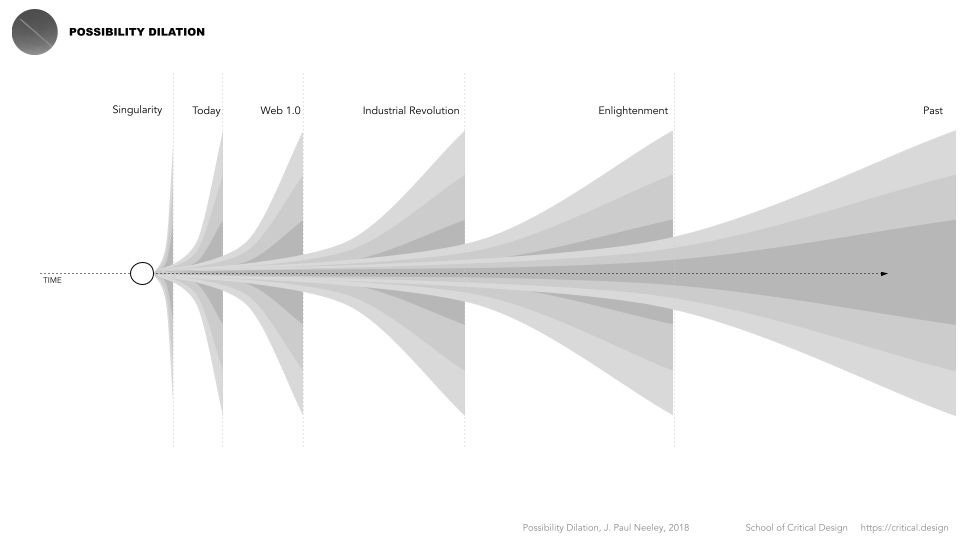Recently, I've been experiencing a sense of déjà vu.
Last week, the insight hit me.
Many organisations are responding to developments in Artificial Intelligence (AI) in a way that is reminiscent of the cliched quote attributed to Henry Ford during the early days of the automobile:
"If I had asked people what they wanted, they would have said faster horses"
This triggered a hunch.
Many (not all) organisations are in a rush to integrate AI into existing business models to optimise what has always been done but faster and more efficiently. This approach ignores the transformative potential of AI and creates strategic risks in a rapidly changing world.
In this blog, I reflect on this hunch through two interpretations of the Three Horizons Model.
Warning: What follows are my developing thoughts; they are not fully baked.
AI developments through the lens of Three Horizons
AI, in its many forms, has the potential to create significant shifts across multiple time frames, with implications for short-term operational improvement and long-term transformative disruption. The Three Horizon models can help us better understand these shifts by framing different innovation and transformation phases, providing valuable sensemaking and insights for organisations. I'll cover two versions of Three Horizons Framework, one from the Futurist Bill Sharpe and the other from the consulting firm McKinsey & Co.
Bill Sharpe's systemic formulation of Three Horizons
Bill Sharpe, a prominent figure in future studies, developed his version of the Three Horizons Framework to understand complex systemic change over time and to help create shared visions of a new system and plans for moving toward it. This model incorporates business innovation, societal transformation, infrastructure shifts, and changes in values or worldviews. It emphasises external developments and subsequent response options and is ultimately a tool for navigating transitions and change.
Horizon 1 represents the dominant system, including established business practices, societal norms, and infrastructures. In the context of AI, many companies focus on integrating AI into their existing operations using tools like chatbots and predictive analytics. The dominant application pattern is incremental optimisation that supports the existing models—faster, better, with less.
Horizon 2 foresees emerging innovations and new practices that start to challenge the status quo. For example, the rise of AI-driven business models, AI agents, Agent Tribes, and decentralised systems represent Horizon 2 shifts as they can potentially transform existing value chains, business models, and organisational structures. Horizon 2 is the domain of transformational experimentation and evolution.
Horizon 3 represents more radical, disruptive changes that may redefine entire systems. In the context of AI, Horizon 3 might involve the emergence of General AI, radical decentralisation leading to entirely new societal structures, economic models, or world orders driven by new AI, computing, or other technological paradigms.
Sharpe describes how the Horizons overlap such that pockets of Horizon 3 can be found in Horizon 1 (the basis of horizon scanning), and pockets of Horizon 1 may persist into Horizon 3 (the stuff we should keep).
McKinsey's business-focused approach
McKinsey's interpretation of the Three Horizons model, based on the 1999 book The Alchemy of Growth, focuses more narrowly on business strategy and innovation management to drive sustained growth. This approach helps companies balance short-term performance with long-term growth by managing a portfolio of initiatives across the three horizons.
Horizon 1 is about maintaining and optimising core business activities. Here, organisations often adopt AI to streamline existing processes.
Horizon 2 represents emerging business opportunities. Companies might explore how AI can create new revenue streams or expand their market reach.
Horizon 3 is where companies explore more speculative, future-oriented opportunities. In the context of AI, exploration might involve the search for entirely new business models that leverage AI's full potential and highlight offensive and defensive imperatives in the present.
While viewing either of these models as sequential phases is tempting, they represent a spectrum of planning timescales that require simultaneous consideration, decision-making and investment in the present and, by nature, imply a level of foresight and exploratory capability.

The current AI landscape and future trajectories
Let's revisit my hunch.
Many organisations are narrowly focusing on integrating AI into their existing business models. Few are considering what might come next—developments that could invalidate current business assumptions entirely.
Companies are racing to restructure data, implement chatbots, automate routine tasks, and enhance decision-making through various AI applications to keep pace. While these efforts can yield efficiency gains, they amount to incremental improvements driven by the need to remain competitive in the short term, and without addressing the long term, lose pace.
It's an imperative for survival, necessary yet problematic when done in isolation. This approach can become a race to the bottom, building strategic risk by overlooking the need to address longer-term transformation possibilities at the earliest opportunity. Ultimately, it increases "futures debt”.
Accelerating change and possibility dilation
Now, things get more complex if one believes the pace of change is accelerating.
The pace of AI advancement suggests that Horizons 2 and 3 may materialise faster than historical precedent would indicate, potentially catching companies flat-footed and unprepared if they are not engaging with and planning for these horizons now.
The accelerating nature of information technologies is a critical factor. When viewed through the lens of possibility dilation, conceptualised by J Paul Neeley (himself inspired by the phenomenon of time dilation in relativistic physics), we can anticipate an expansion of potential future possibilities coupled with accelerated arrival. This acceleration effect interacts with Sharpe's model to compress the timelines between horizons. The result? Disruption to value chains and business models could arrive with surprising speed and strategic shock if not fully anticipated.

Consider the emerging landscape of autonomous AI agents and tribes. Though still in its infancy, we are seeing early signs of emergence, and evidence suggests these technologies could achieve mainstream adoption within 3 to 5 years, if not sooner. They have the potential to radically reshape organisational structures, business models and market dynamics in the medium term. Such developments would mark a significant shift and should be a Horizon 2 challenge that organisations are actively addressing now. How many are?
“Agents are not only going to change how everyone interacts with computers. They’re also going to upend the software industry, bringing about the biggest revolution in computing since we went from typing commands to tapping on icons. Agents won’t simply make recommendations; they’ll help you act on them.” – Bill Gates
This raises crucial questions: Should organisations proactively anticipate, plan, and invest to prepare for this shift? Or should they take a reactive stance, responding if—and when—disruption occurs? Should they radically restructure in anticipation of rapid horizon convergence? How can leaders navigate these decisions? What does it even mean to lead in these contexts?
Aside: One might argue that Bill Gates's quote isn't entirely impartial. However, it's worth noting that Gates also maintains software is still "dumb." This raises another intriguing question: who's contemplating the future of human and collective intelligence?
Balancing expectations and reality
We should acknowledge the countervailing perspective. AI hype has inflated expectations in some areas; for many, Generative AI has become synonymous with the broader field of AI. Social media and marketing narratives often exaggerate capabilities and timelines.
The perceived acceleration may be partly imaginary, and genuinely transformative disruption may be further off than the most bullish forecasts suggest. It depends on the AI narratives organisations choose to believe and, more importantly, why.
We also shouldn't assume change is evenly paced, distributed or continuous. Drawing from evolutionary biology, we can expect punctuated equilibrium—periods of stasis interspersed with rapid change. Nevertheless, clues about the future can be found in the present, highlighting the importance of horizon scanning and futures intelligence.
Scenario planning and multi-horizon strategy
Scenario planning offers a method for navigating the inherent uncertainties I've described. Exploring multiple scenarios rooted in the earliest detectable signs of change enables the identification of strategic options, indicators, and strategies that can be structured within a three-horizon portfolio.
These strategies can then flex to accommodate various paces of AI advancement and market disruption.
Operationalising a scenario-based, multi-horizon approach might involve simultaneously:
Optimising current processes with AI while calibrating investments based on scenario probabilities and impacts to avoid over-committing to potentially obsolete strategies and business models.
Allocating resources to explore and experiment with AI-driven business model innovations that align with more disruptive scenarios, even if they challenge existing revenue streams.
Using scenarios to envision and prepare for radically different AI-enabled futures.
Cultivating a culture of radical empowerment, continuous learning, exploration and adaptation, focusing on identifying and responding to early warning indicators.
Pushing decision-making power and resources into innovation teams to increase agility, learning and innovation velocity.
Looking beyond the faster horse
This leads me to my second hunch: in the face of AI developments, the winners will be organisations that can balance short-term optimisation with long-term, continuous transformation evolution founded on anticipatory methods and capabilities such as futures intelligence and scenario planning, Three Horizons Frameworks coupled with radical restructuring to accelerate learning and organisational agility (let’s not confuse this with agile methodologies!)
The losers will remain fixated on Horizon 1 and constrained by the barriers of short-term ROI and centralised decision-making, which raises questions about venture capitalists’ and shareholders’ roles and motivations (#another-rabbit-hole).
Last words
George Box's aphorism comes to mind.
“All models are wrong, but some are useful”
The models I discuss in this piece are valuable thinking tools for probing my recent observations and hunches. They are not exhaustive or perfect representations of reality but frameworks used to develop understanding.
.






